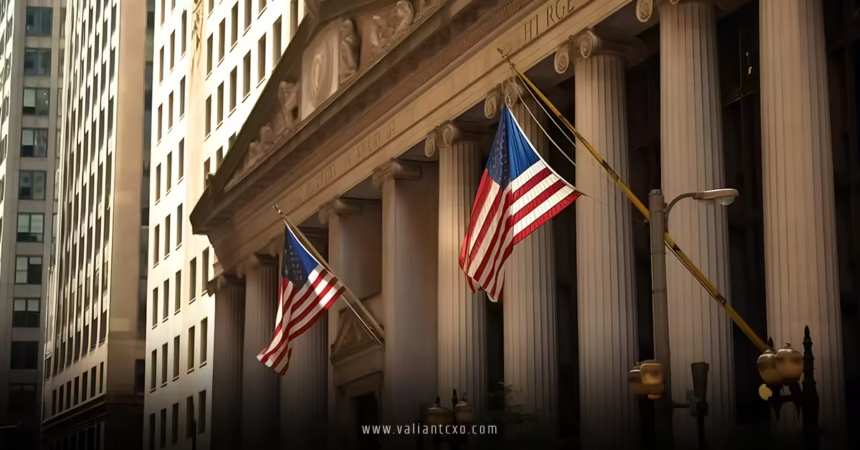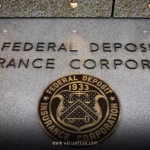How U.S. banks are preparing for climate-related financial risks is no small topic in today’s world. Picture this: a storm’s brewing—not just in the skies but in balance sheets, loan portfolios, and risk models. Climate change isn’t just an environmental issue; it’s a financial juggernaut that’s forcing banks to rethink how they operate. From wildfires torching collateral to regulations pushing for a greener economy, U.S. banks are scrambling to stay ahead of the curve. So, how are they doing it? Let’s dive into the strategies, challenges, and opportunities that are shaping the banking sector’s response to this global crisis.
Why Climate Risks Matter to U.S. Banks
Imagine a bank as a tightrope walker, balancing profits and risks while the wind of climate change howls around them. Climate-related financial risks come in two flavors: physical risks (think floods, hurricanes, or droughts damaging assets) and transition risks (the economic shifts from moving to a low-carbon world). Both can hit banks where it hurts—right in their wallets. A single hurricane could wipe out properties tied to mortgages, while new regulations might devalue investments in fossil fuel companies. For U.S. banks, ignoring these risks is like ignoring a ticking time bomb.
Physical risks are already making headlines. Take the 2018 California wildfires, which led to the bankruptcy of Pacific Gas and Electric, dubbed the first “climate-change bankruptcy” by The Wall Street Journal. Banks with loans tied to such companies face massive losses when disasters strike. Transition risks, meanwhile, are sneakier. The 2022 Inflation Reduction Act is pushing clean energy, which could strand assets like coal plants or oil rigs, leaving banks holding the bag on loans that can’t be repaid.
How U.S. Banks Are Preparing for Climate-Related Financial Risks: Key Strategies
So, how are U.S. banks tackling these challenges? It’s not just about throwing money at the problem—they’re getting strategic, innovative, and, frankly, a bit creative. Here’s a look at the main ways they’re gearing up.
Enhancing Risk Management Frameworks
Banks are beefing up their risk management like a homeowner reinforcing their house before a storm. They’re weaving climate risks into their existing frameworks, treating them as seriously as credit or market risks. This means updating models to account for things like rising sea levels or carbon taxes. For example, some banks are now using climate-adjusted credit scorecards to evaluate borrowers. These scorecards factor in how a company’s operations might be affected by extreme weather or new green regulations.
Big players like JPMorgan Chase are leading the charge. Since 2022, they’ve been publishing detailed reports on how they assess climate risks, using scenarios that assume global warming of 2.7°C to over 3°C by 2100. It’s not just about preparing for the worst—it’s about staying profitable in a world where the rules are changing fast.
Conducting Climate Stress Tests
Ever wonder how banks test their resilience? It’s like putting their portfolios through a financial obstacle course. Climate stress tests are simulations that see how banks would fare under extreme climate scenarios—like a Category 5 hurricane or a sudden ban on fossil fuels. The Federal Reserve kicked off its first climate scenario analysis for the six largest U.S. banks in 2022, with results expected to guide future strategies.
These tests help banks identify weak spots. For instance, a community bank with loans concentrated in a flood-prone area might realize it’s overexposed. By stress-testing, banks can adjust their lending practices, maybe shifting focus to less vulnerable regions or industries. It’s proactive, not reactive, and it’s becoming a cornerstone of how U.S. banks are preparing for climate-related financial risks.
Investing in Green Finance
Here’s where things get exciting. Banks aren’t just playing defense—they’re seeing dollar signs in the green economy. Green finance, like issuing green bonds or offering sustainability-linked loans, is booming. These products incentivize businesses to cut emissions, and banks are jumping on the bandwagon. Why? Because financing solar farms or electric vehicle production isn’t just good for the planet—it’s good for business.
Take Bank of America, which has pledged billions toward sustainable finance. They’re funding projects that align with the Paris Agreement’s goals, betting that the shift to clean energy will create new revenue streams. It’s like planting seeds now for a forest of profits later.
Improving Climate Risk Disclosures
Transparency is the name of the game. Banks are under pressure to spill the beans on how climate risks affect their operations. The Task Force on Climate-Related Financial Disclosures (TCFD) has set the gold standard here, pushing for standardized reporting. U.S. banks are starting to comply, detailing their exposure to physical and transition risks in annual reports.
This isn’t just about looking good for regulators—it’s about building trust with investors. Clear disclosures show that a bank knows its risks and has a plan to manage them. It’s like a student showing their work on a math problem: even if the answer’s not perfect, the effort builds credibility.
Challenges in Preparing for Climate-Related Financial Risks
It’s not all smooth sailing. How U.S. banks are preparing for climate-related financial risks comes with some serious hurdles. Let’s break them down.
Data Gaps and Uncertainty
Climate risk is a beast to measure. Unlike traditional financial risks, it’s full of unknowns. How do you predict the cost of a flood 20 years from now? Or the impact of a carbon tax that hasn’t been passed yet? Banks are grappling with spotty data and models that don’t fully capture the chaos of climate change. Without solid data, it’s like trying to navigate a ship in fog—you’re moving forward, but you’re not sure where you’ll end up.
Regulatory Patchwork
The U.S. regulatory landscape is a bit like a quilt made by a committee—patchy and inconsistent. While federal regulators like the Federal Reserve and the Office of the Comptroller of the Currency (OCC) are starting to issue climate-related guidance, it mostly applies to big banks with over $100 billion in assets. Smaller community banks, which are often more vulnerable, are left in the lurch. Some states, like New York, are stepping up with broader rules, but the lack of a unified federal approach makes it tough for banks to plan.
Balancing Profit and Purpose
Banks are businesses, not charities. They have to weigh the cost of climate preparedness against shareholder demands. Some, like Wells Fargo, have faced backlash for backtracking on climate pledges, prioritizing profits over promises. It’s a tightrope act: invest too much in green initiatives, and you might lose investors; ignore climate risks, and you’re setting yourself up for losses when the storms hit.
Opportunities for U.S. Banks in a Changing Climate
Despite the challenges, there’s a silver lining. How U.S. banks are preparing for climate-related financial risks isn’t just about survival—it’s about seizing opportunities. The transition to a low-carbon economy is opening doors to new markets and innovations.
Leading the Green Transition
Banks that get ahead of the curve can become leaders in the green economy. By financing renewable energy projects or offering green mortgages, they’re not just mitigating risks—they’re building brand loyalty and attracting eco-conscious customers. It’s like being the first shop in town to sell electric cars: you get the early adopters and the buzz.
Strengthening Community Resilience
Smaller banks, especially community and regional ones, have a unique role to play. They can support local businesses and homeowners in adapting to climate change—think loans for flood-proofing homes or backing small-scale solar projects. This not only reduces risk but also cements their place as community pillars.
Innovating with Technology
Technology is a game-changer. Banks are using AI and big data to better predict climate risks. Imagine a tool that maps out flood risks for every property in a bank’s mortgage portfolio—that’s the kind of innovation happening now. These tools help banks make smarter lending decisions and stay ahead of regulators.
How U.S. Banks Are Preparing for Climate-Related Financial Risks: A Closer Look at Regulation
Regulators are waking up to the reality of climate risks, and they’re pushing banks to act. The Federal Reserve, OCC, and FDIC have all issued draft guidance to help banks integrate climate risks into their operations. But here’s the catch: this guidance often focuses on the big dogs—banks with massive balance sheets. Smaller banks, which make up the majority of the U.S. banking system, are often left to figure things out on their own.
At the state level, things are moving faster. The New York State Department of Financial Services (NYDFS) has proposed rules that apply to all banks, not just the giants. These rules push for detailed climate risk assessments and transition plans to align with net-zero goals. It’s a sign that regulators are starting to see climate risk as a systemic issue, not just a problem for Wall Street.
The Role of Collaboration in Climate Risk Management
No bank is an island. How U.S. banks are preparing for climate-related financial risks often involves teaming up with others. Industry groups like the Institute of International Finance (IIF) are helping banks share best practices and develop common standards. International efforts, like the Network for Greening the Financial System (NGFS), are also shaping how U.S. banks approach climate risks.
Collaboration isn’t just about talking shop—it’s about pooling resources to tackle big problems. For example, banks are working with tech firms to develop better climate models and with insurers to understand how rising claims might affect loan portfolios. It’s like assembling a superhero team to fight a common enemy.
Conclusion
How U.S. banks are preparing for climate-related financial risks is a story of adaptation, innovation, and a bit of grit. From stress-testing portfolios to pouring money into green finance, banks are rethinking their strategies to weather the storm of climate change. Sure, there are challenges—spotty data, inconsistent regulations, and the ever-present pressure to turn a profit—but the opportunities are just as big. By embracing transparency, leveraging technology, and collaborating across the industry, U.S. banks can not only survive but thrive in a warming world. So, what’s next? It’s up to banks, regulators, and even customers like us to keep pushing for a financial system that’s as resilient as it is responsible. Let’s keep the momentum going!
FAQs
1. What are the main climate-related financial risks U.S. banks face?
U.S. banks face physical risks, like damage from natural disasters, and transition risks, like losses from shifts to a low-carbon economy. Both can lead to loan defaults or devalued assets, impacting how U.S. banks are preparing for climate-related financial risks.
2. How are small banks preparing for climate risks compared to large banks?
Smaller banks often lack the resources of big banks but are still taking steps like assessing local climate vulnerabilities and offering green loans. Federal guidance focuses on large banks, so small banks rely more on state rules or industry collaboration to prepare for climate-related financial risks.
3. Why is climate stress testing important for banks?
Climate stress testing helps banks see how their portfolios would hold up under extreme climate scenarios. It’s a key part of how U.S. banks are preparing for climate-related financial risks, identifying weak spots and guiding smarter lending decisions.
4. How do green bonds help banks manage climate risks?
Green bonds fund eco-friendly projects, reducing exposure to high-carbon assets. They’re a growing part of how U.S. banks are preparing for climate-related financial risks, aligning with the shift to a sustainable economy while attracting new customers.
5. What role do regulators play in how U.S. banks are preparing for climate-related financial risks?
Regulators like the Federal Reserve and OCC are issuing guidance to integrate climate risks into bank operations. They’re pushing for stress tests and disclosures, but smaller banks need more tailored support to fully prepare.
For More Updates !! : valiantcxo.com


